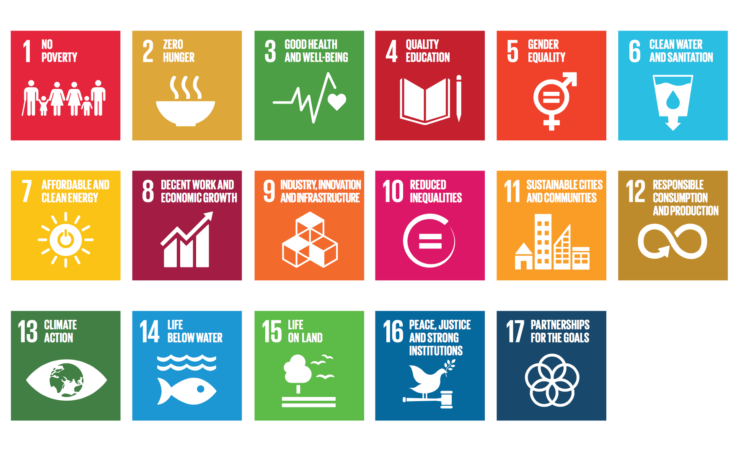News
Inspiration Drink Sustainability

Maryse Leloup

Daan Fraanje
During the inspiration café on April 9th, Maryse Leloup & Daan Fraanje spoke about improving the sustainability of education. Both work for Educate-it, which has as its mission to improve education at Utrecht University. The university has set itself the goal of being completely CO2 neutral by 2030, an ambitious and noble intention. Although steps have been taken in the right direction, there is a long way to go to reduce the footprint enough. Educate-it aids teachers in several ways, so they can organize their education in a more sustainable way, and so contribute to a reduction of CO2 emissions.
What is sustainability?
Sustainability can be defined in different ways, though most people will think of ecology and environment. The university uses a broad definition of the concept and takes the Sustainable Development Goals (SDGs) of the United Nations (UN) as a starting point. The SDGs are loosely formulated and vary from social goals (gender equality) to economic goals (no poverty) and ecological goals (climate action). The SGDs are purposefully formulated this way, so they are accessible for more countries.

Aiding teachers
Educate-it is currently working on two projects to support teachers in increasing the sustainability of their courses. They develop E-modules, where theory and real-world examples of Sustainable Development Goals are combined. In addition, Educate-it is setting up a platform where teachers are stimulated to exchange their knowledge, ideas and experiences about increasing the sustainability of education.
Maryse gives an example of an E-module about consumption and hidden consumption. An example of visible consumption are physical materials that students and teachers use, less visible are for example the use of teaching spaces and energy use. An example of a tool that is offered by Educate-it is PathXL. PathXl is an app that students can use to practice using a microscope. This would make savings on teaching spaces and microscopes, and on top of that, fewer travel movements would be needed.
Drinkable Rivers
 Thinking about (hidden) consumption, as a teacher you could think about the use of teaching spaces. Is a room really necessary for your education? Maybe it is possible to do (a part) of your course outside. A nice example of this is Li An Phoa, who is teacher at a university and initiator of drinkable rivers, which aims to make rivers drinkable again. Li An takes her student outside, to the rivers, where she teaches them. Apart from the fact that teaching outside is more sustainable, it serves a different purpose here, Li An wants to make the students feel they are part of a larger whole that we as humanity not only depend on, but are are also jointly responsible for.
Thinking about (hidden) consumption, as a teacher you could think about the use of teaching spaces. Is a room really necessary for your education? Maybe it is possible to do (a part) of your course outside. A nice example of this is Li An Phoa, who is teacher at a university and initiator of drinkable rivers, which aims to make rivers drinkable again. Li An takes her student outside, to the rivers, where she teaches them. Apart from the fact that teaching outside is more sustainable, it serves a different purpose here, Li An wants to make the students feel they are part of a larger whole that we as humanity not only depend on, but are are also jointly responsible for.
Future
As a teacher, you may want to make your education more sustainable, but how? It is important to involve your students in the process. As a teacher you are just the building block, you need to motivate the students. Let your students think about ways to improve sustainability in your course; they have more ideas than you might think. Realize, anyone can make a difference within his or her influence, even if that influence is limited. Every little bit counts. Would you like to improve the sustainability of your course, but do you need a little bit of support? Contact Educate-it, they may be able to help you further.
Want to know more?
Author: Naomi Smorenburg, student Utrecht University
NB: The content of this publication has not been approved by the United Nations and does not reflect the views of the United Nations or its officials or Member States.

